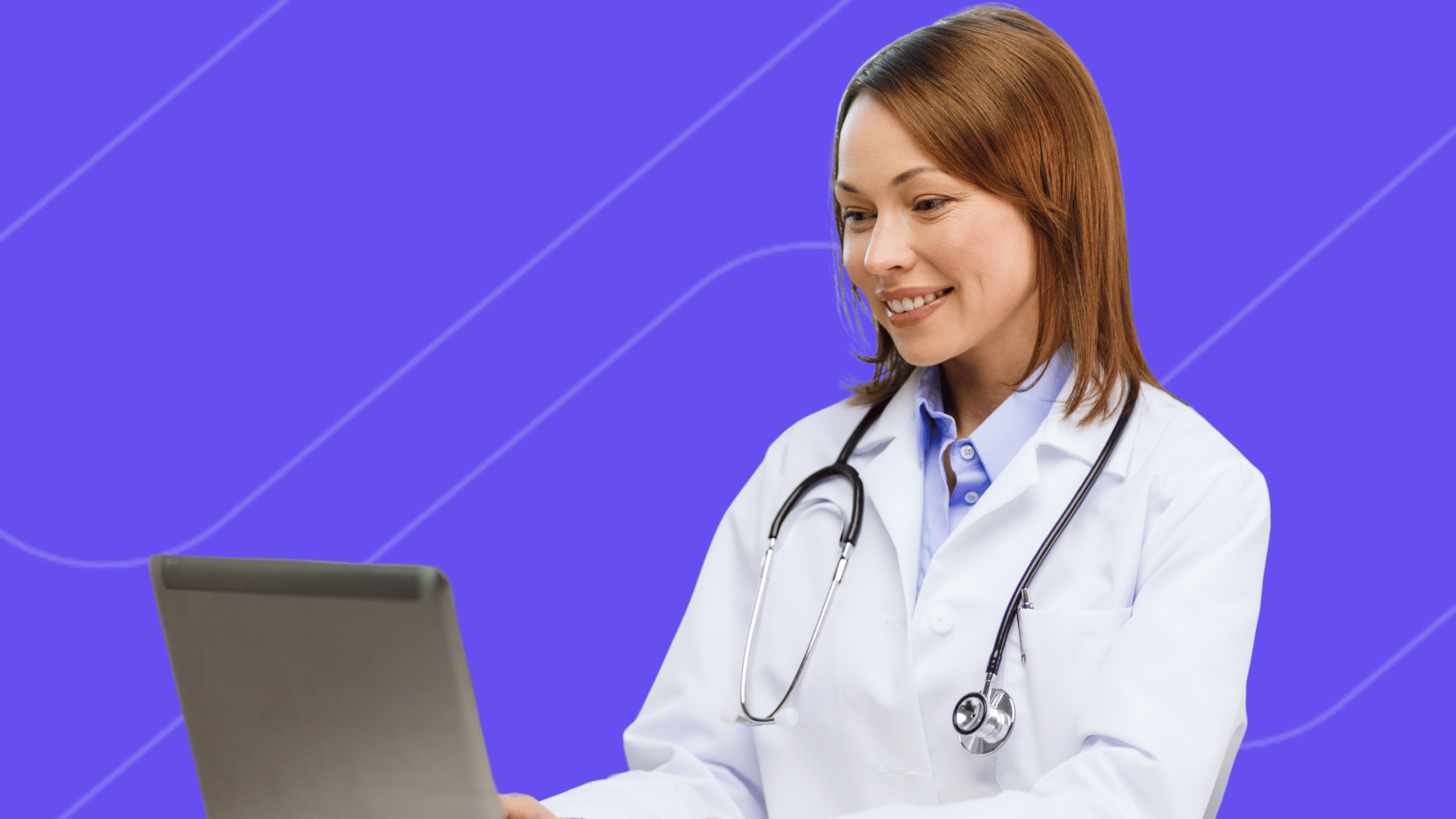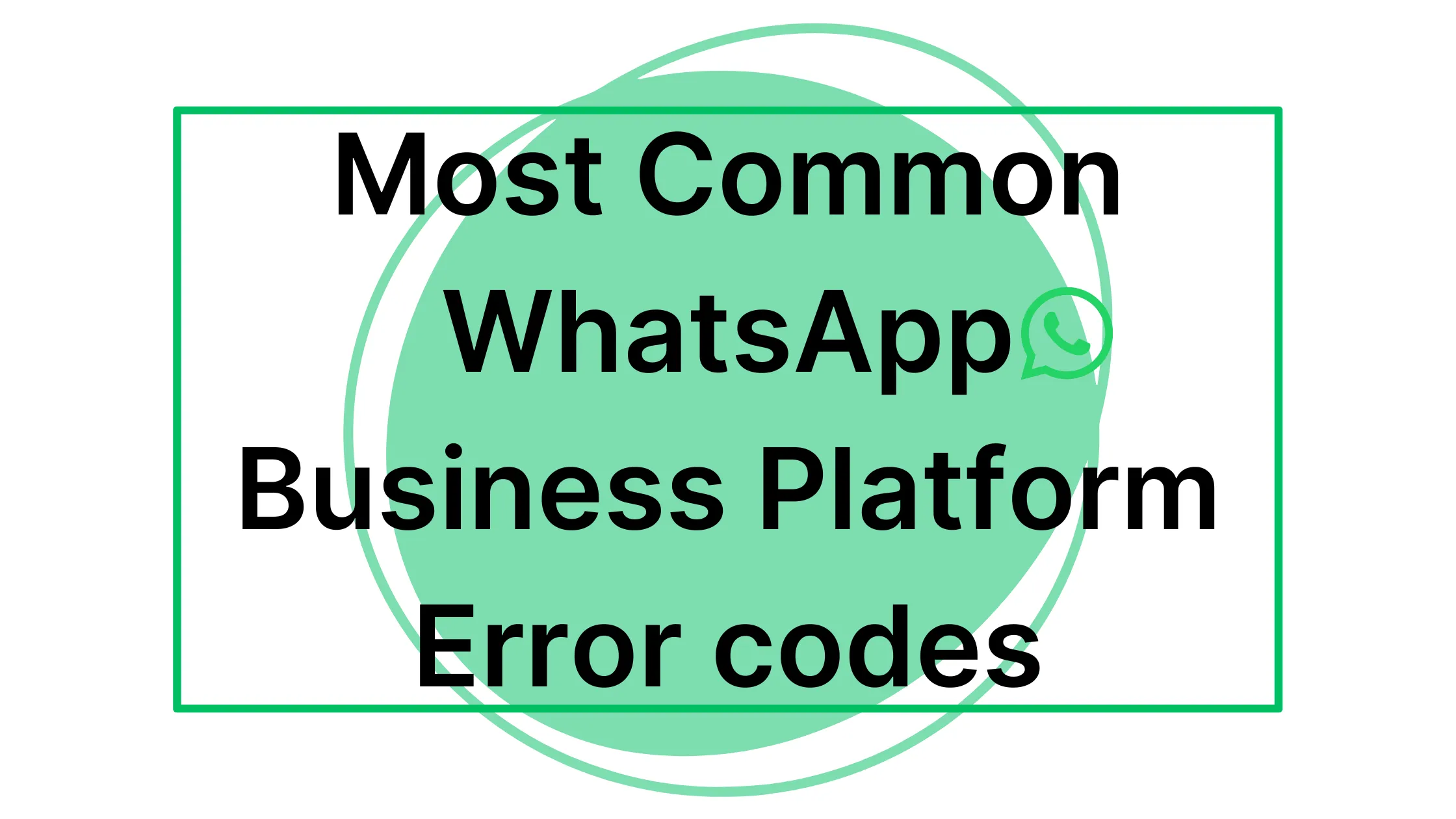Ever feel like it’s a struggle to keep track of records, appointments, and patient interactions in healthcare? You’re not the only one. Managing all these tasks daily can be overwhelming, but Healthcare CRM software can help simplify things for everyone involved.
In this article, I’ll walk you through the key features and benefits of choosing the right CRM system to enhance patient care in your practice. Stay with me, and I’ll show you how a Healthcare CRM can make managing your practice a whole lot easier.
What is a Healthcare CRM Software?
A healthcare CRM is a customer relationship management system made specifically for the healthcare industry. It combines data from different sources, like patient demographics, behavior, medical history, and financial information, to give a full picture of each patient. The main goal of a healthcare CRM is to help healthcare providers attract, engage, and keep patients by understanding their needs and improving communication.
Essential Features of Healthcare CRM
Consolidates Patient Information:
- All patient data is consolidated in a single location.
- Access to medical records, treatment strategies, and prescribed medications.
Streamlines Processes:
- Minimizes paperwork.
- Eases administrative tasks.
Improving Patient Communication:
- Automated reminders for appointments via text message or email.
- Enables communication between healthcare providers and patients.
- Keeps patients engaged by sending follow-up notifications.
Enhancing the Patient Journey
Utilizing a healthcare CRM software for communication fosters a sense of connection and importance among patients, which ultimately improves patient retention and satisfaction levels. Learn more about improving patient experience through omnichannel engagement.
Ensures Adherence to Regulations:
- Fully complies with all data security regulations outlined in the HIPAA guidelines.
- Offers functionalities such as data encryption and access controls.
- Streamlines audits and ensures adherence to regulations by providing activity logs.
Handles Everyday Tasks:
- Optimizes the coordination of appointments and payments.
- Ensures post-service communication.
- Automated workflows help minimize human errors.
- Allows employees to dedicate time to more important responsibilities.
By integrating healthcare CRM software into their operations, healthcare organizations can guarantee a friendly and smooth experience for patients and staff members alike, ultimately leading to improved compliance with regulations and elevated standards of patient care excellence.

Challenges Frequently Encountered in Managing Healthcare
Healthcare professionals nowadays encounter difficulties that can create a sense of struggle when it comes to overseeing patient interactions and daily operations at a medical facility like a clinic or hospital. These challenges are probably quite familiar if you’re in charge of such a setting. Let’s delve into some issues that often arise and explore how utilizing an appropriate CRM system can alleviate these pressures.
Fragmented Medical Information
- Patient data is scattered across systems or platforms.
- Difficulty accessing medical records, treatment details, and notes.
- Wasting time searching for files causes frustration for both employees and patients.
Solution: Keeping all information in one convenient place can save time searching for records and enhance the patient’s overall experience.
Dealing with an Excess of Administrative Responsibilities
- Struggling with tasks of arranging appointments, managing payments, and paperwork.
- Administrative demands encroach on time dedicated to patient care.
- Healthcare workers face a higher likelihood of experiencing burnout.
Concerns About Compliance and Data Security Issues
- Stringent regulations under HIPAA mandate secure data protection measures.
- Worries about data breaches and potential legal consequences.
- It is necessary to conduct compliance assessments and keep procedures current.
Insufficient Patient Involvement
- Difficulty keeping in touch with patients on a regular basis.
- High rates of no-shows are caused by missed or forgotten appointments.
- Patients feeling isolated or unappreciated may be less likely to stay engaged in their healthcare treatment plans.
Challenges Arising from Integrating with Current Systems
- Multiple software applications that do not interact or share information.
- Manual data transfer between systems leads to higher error rates.
- Switching between platforms wastes time and hampers productivity.
Limited Utilization of Data Insights
- The data collected is underutilized for enhancing patient care.
- Missed opportunities for marketing efforts or follow-ups with patients.
- Insufficient information for making informed decisions.
Tip: Utilizing data analytics can reveal patterns and trends in patient behavior, assisting you in making well-informed choices regarding your practice.
Dealing with the Obstacles of Growth
- Struggling to handle expansion while upholding high-quality patient care standards.
- Current tools lack the flexibility to accommodate an increase in patients or additional services.
- Workflow and resource allocation bottlenecks causing delays and inefficiencies.
Frequent Absences
- The financial impact of missed appointments is significant for revenue.
- Patient involvement varies, causing interruptions in healthcare delivery.
- Challenges in finding replacements for vacant positions.
Challenges in Providing Tailored Personalized Care
- Communication is not tailored to meet the needs of each patient.
- Partial understanding of patient’s preferences and medical history.
- Patients feel treated as statistics rather than recognized as unique individuals.
Solution: A CRM with segmentation and tagging capabilities allows for communication and care plans tailored to each patient’s requirements, enhancing satisfaction levels and encouraging loyalty.
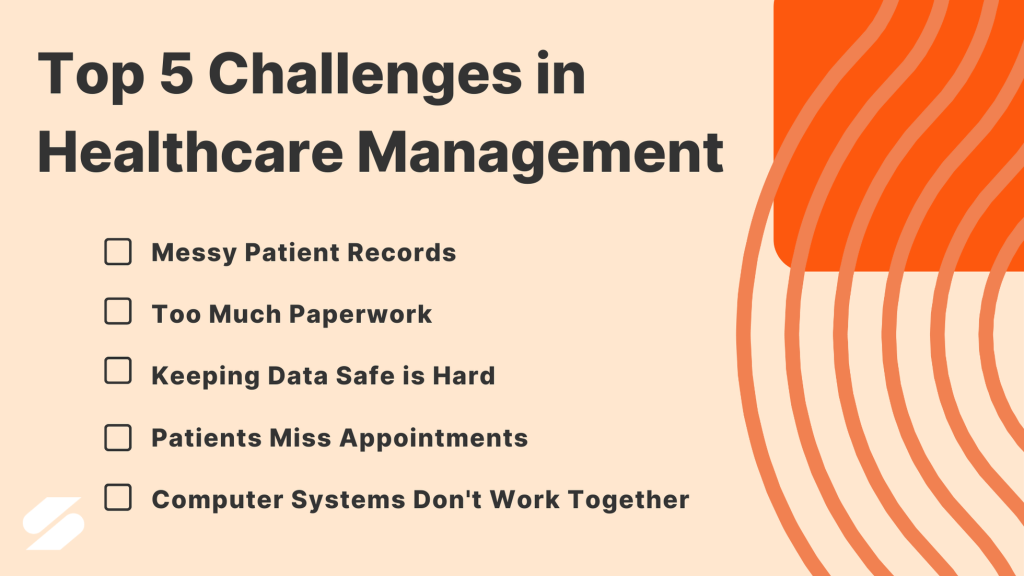
By focusing on these areas of concern, healthcare facilities can improve their operations and enhance patient care quality. Adopting a well-structured approach, such as implementing a CRM system, is essential in turning these obstacles into avenues for development and improved patient well-being. Sanoflow equips you with the means to smoothly handle these challenges, bridging the gap to the convenience and effectiveness you’ve been striving for.
Essential Components of Healthcare CRM Software
An effective healthcare CRM should do more than keep patient records; it should streamline tasks, enhance patient connections, and optimize your practice’s productivity level. Here are the essential features to look for:
Main Characteristics of a Healthcare CRM Software
Tools for Managing Care
- Single Repository:
- Stores all interactions with patients.
- Accessible Medical Records:
- Detailed health information along with prescribed treatments and medications.
- Reduces Paperwork:
- Cuts down on paperwork and reduces the chances of mistakes.
- Patient Journey Overview:
- Provides a summary from appointment scheduling to final follow-up visit.
Tools for Communication with Patients
- Automated Reminders:
- Receive appointment reminders through text or email.
- Secure Messaging:
- Crucial for confidential conversations.
- Periodic Notifications:
- Keeps patients engaged and involved.
Benefits:
- Decreases missed appointments and boosts patient happiness.
Data Analysis and Reporting
- Monitoring Engagement and Satisfaction:
- Tracks patient involvement levels.
- Practice Performance Insights:
- Offers insights on practice performance and marketing strategies.
- Identifies Areas for Improvement:
- Enables data-driven decision-making.
Connecting with Healthcare Systems
- Seamless Integration:
- Integrates with Electronic Health Records (EHR) and practice management software.
- Data Consistency:
- Maintains patient data across all platforms.
- Automation:
- Automates data input and minimizes mistakes.
- Time-Saving:
- Saves time by not having to switch between programs.
Streamlining and Automating Tasks
- Automated Scheduling and Billing:
- Manages appointments and invoicing.
- Post-Visit Follow-Ups:
- Manages check-ins after visits.
- Reduces Human Errors:
- Minimizes paperwork and mistakes.
- Increases Productivity:
- Speeds up tasks to enhance overall productivity.
- Focus on Patient Care:
- Allows employees to dedicate time to patients.
Why Search for These Characteristics?
- Enhance Patient Satisfaction:
- Improved communication techniques.
- Streamline Tasks:
- Minimize mistakes and save time effectively.
- Gain Knowledge from Data:
- Make more informed choices.
- Ensure Data Security:
- Keep information confidential yet accessible when needed.
Functionalities to Consider in Healthcare CRM Systems
Moving beyond the essentials and delving into advanced functionalities can significantly impact the efficiency of your practice operations. Here are some key advanced features worth exploring:
Social CRM in the Healthcare Industry
- Oversees Patient Reviews
- Monitors Feedback:
- Keeps track of opinions shared on social networking platforms.
- Understands Sentiments:
- Assists in grasping patient sentiments and satisfaction levels.
- Addresses Concerns Quickly:
- Responds to worries or grievances immediately.
- Monitors Feedback:
- Improves Patient Involvement
- Health Tips and Updates:
- Uses social media to disseminate health advice and news.
- Builds Relationships:
- Engaging directly with patients fosters connections.
- Brand Visibility:
- Enhances reputation and boosts brand visibility.
- Health Tips and Updates:
Integrating WhatsApp with CRM
- Instantaneous Correspondence
- Direct Communication:
- Enables messaging with patients via WhatsApp.
- Immediate Updates:
- Appointment reminders and quick follow-ups.
- Enhances Patient Experience:
- Faster responses and improved satisfaction.
- Direct Communication:
- Convenient Patient Accessibility
- Familiar Platform:
- Many patients already use WhatsApp.
- Increased Interaction:
- Enables replies and engagement opportunities.
- No Additional Apps Needed:
- Communication without requiring extra platforms.
- Familiar Platform:

Healthcare Marketing Automation
- Marketing Campaign Automation
- Scheduled Communications:
- Plans email campaigns and newsletters.
- Regular Updates:
- Sends updates to patients on a regular basis.
- Patient Segmentation:
- Tailors service to groups based on demographics or medical history.
- Reduces Manual Effort:
- Minimizes the need for manual marketing tasks.
- Scheduled Communications:
- Tailored Communication
- Personalized Messages:
- Crafts messages according to actions and preferences.
- Enhances Loyalty:
- Improves patient loyalty and happiness.
- Attracts New Patients:
- Implements improved marketing tactics.
- Personalized Messages:
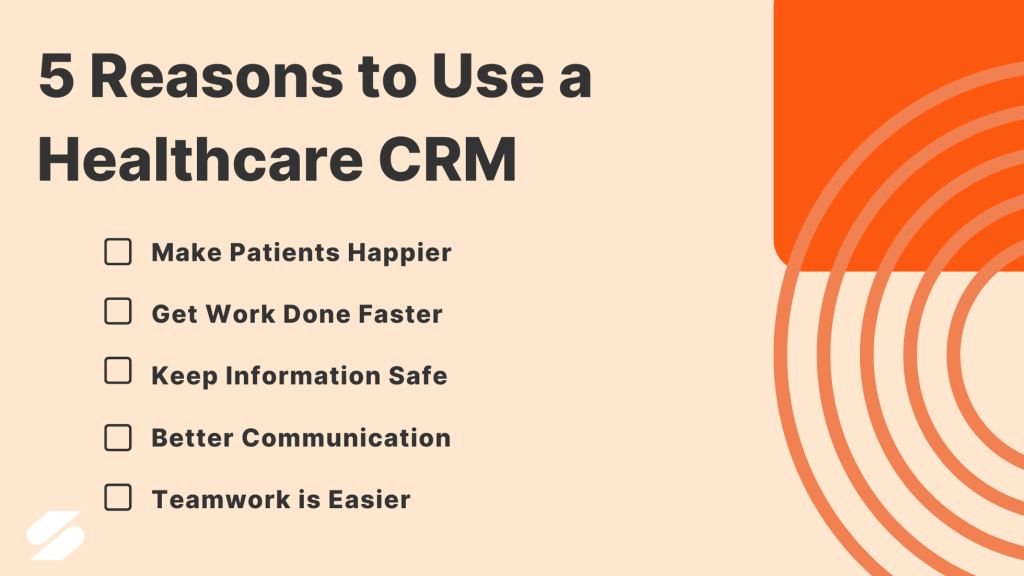
Explore more about broadcasts and promotional messaging.
Automation Software for Hospitals and Clinics
- Optimizes Processes
- Efficient Operations:
- Handles check-ins, billing, and patient discharge efficiently.
- Reduces Paperwork:
- Helps staff by streamlining tasks to save time and resources.
- Improves Collaboration:
- Enhances collaboration among departments for seamless operations.
- Efficient Operations:
- Enhances Management of Patient Flow
- Real-Time Tracking:
- Keeps tabs on patient movements and schedules instantly.
- Reduces Wait Times:
- Improves coordination of appointments.
- Increases Patient Satisfaction:
- Enhances overall patient experience.
- Real-Time Tracking:
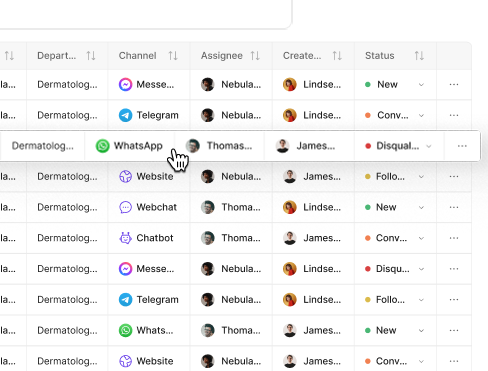
Advantages of Utilizing a Healthcare CRM Software
Using a healthcare CRM software goes beyond storing patient information—it revolutionizes the way your medical practice functions, offering significant advantages to consider.
How a Healthcare CRM Enhances Patient Happiness
Crafting a Patient Journey
- Personalized Communication and Treatment Strategies:
- Sends prompts and thoughtful check-ins.
- Building Rapport:
- Keep in mind patients’ preferences and requirements.
Improving Communication
- Automated Appointment Reminders:
- Helps decrease missed appointments.
- Quick Responses:
- Access to patient data for prompt replies.
- Secure Messaging:
- Enables faster and more confidential communication.
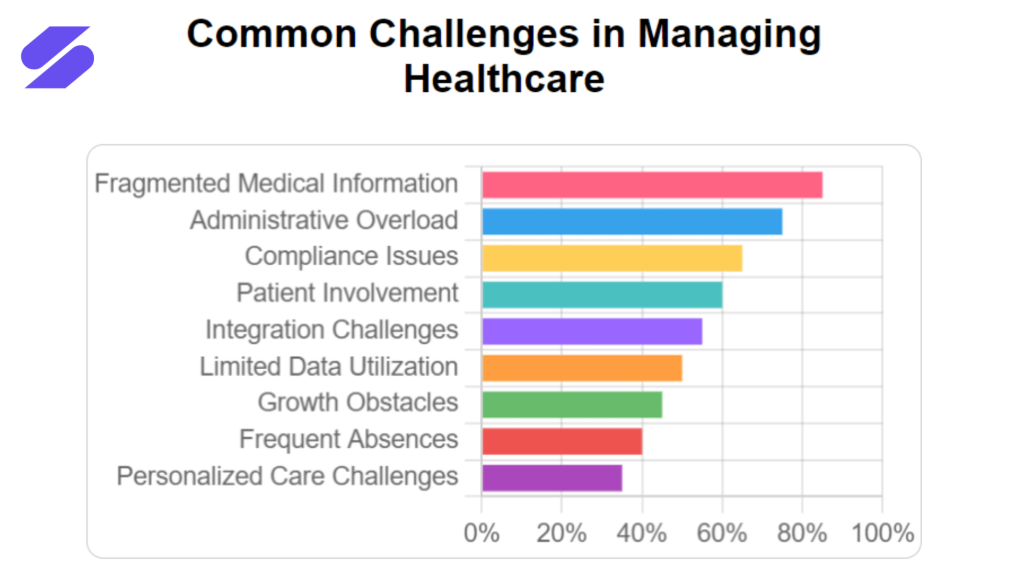
The Significance of Personalization:
Patients desire to feel appreciated and heard by their healthcare providers. Demonstrating care for individual needs through personalized interactions can enhance patient satisfaction and loyalty.
Operational Efficiency with a Healthcare CRM
Simplifies Administrative Duties
- Automates Tasks:
- Handles invoices, schedules, and data entry.
- Focus on Patient Care:
- Allows staff to dedicate time to patients.
- Maximizes Accuracy:
- Reduces mistakes through automation.
Organizes Data Efficiently
- Centralized Information:
- All data in one location for authorized access.
- Saves Time:
- Reduces time spent searching records.
- Improves Collaboration:
- Enhances inter-departmental communication.
Don’t Forget About Training: While automation is beneficial, it’s crucial to provide adequate training to your employees. Ensuring your team is well-versed in utilizing the CRM system can greatly boost productivity and enhance patient care quality.
Security and Compliance
Safeguards Patient Data
- Data Encryption:
- Secures information to deter unauthorized access.
- Access Controls:
- Protects confidential data.
- Regular Updates:
- Ensures security measures meet compliance standards.
Ensuring Adherence to Requirements
- Avoids Legal Repercussions:
- Steers clear of monetary sanctions.
- Builds Trust:
- Establishes credibility with patients by protecting their information.
- Facilitates Audits:
- Eases compliance audits through activity records.
Marketing Strategies
Focused Marketing Strategies
- Patient Segmentation:
- Uses data to target specific demographics.
- Personalized Messaging:
- Enhances engagement.
- Attracts New Patients:
- Understand needs and preferences.
Patient Engagement
- Automated Follow-Ups:
- Sends messages and conducts check-ins.
- Keeps Patients Informed:
- Provides updates and educational content.
- Promotes Return Visits:
- Personalized messages encourage loyalty.
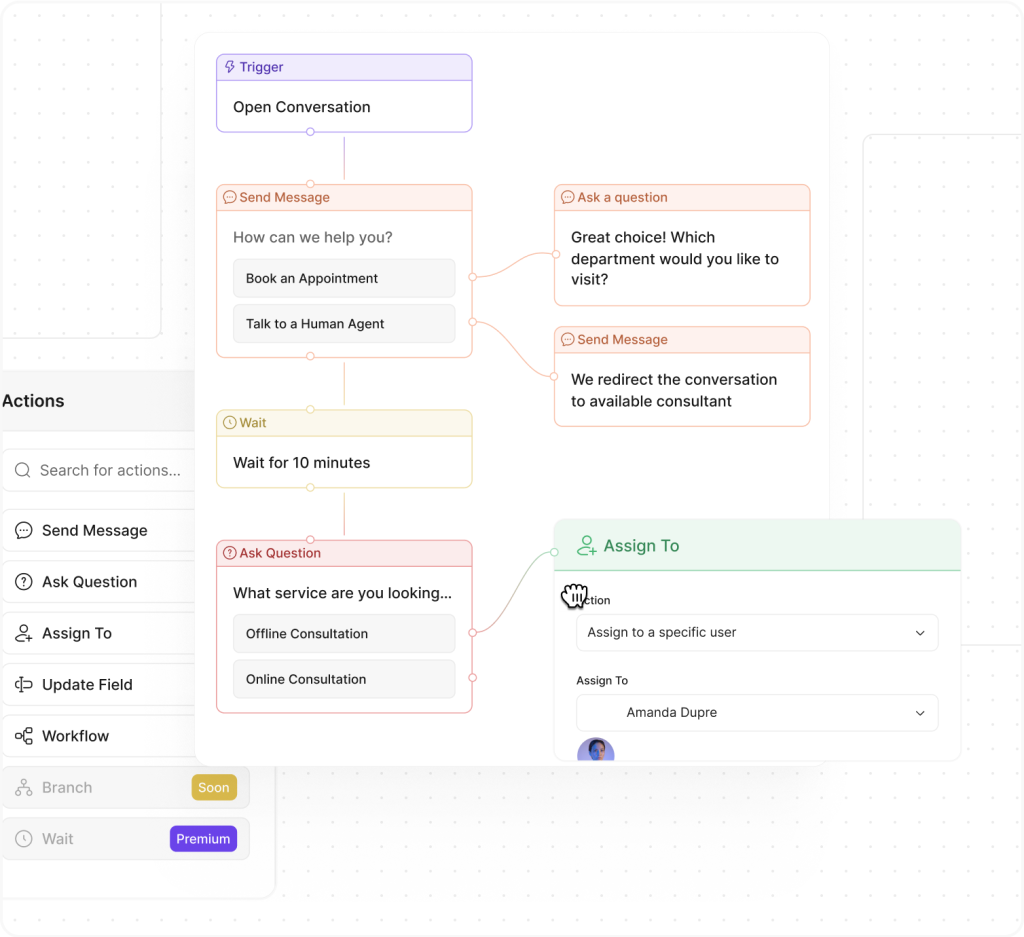
- Personalized messages encourage loyalty.
Optimizing Your Marketing Plan: Leverage the information gathered from your CRM to develop targeted marketing initiatives aimed at reaching out to patients who may require your services or reconnect with individuals who haven’t visited recently.
Varieties of Healthcare CRM Softwares
Various healthcare CRMs emphasize different aspects. Being aware of these variations can assist you in selecting the most suitable option. Consider the importance of selecting a CRM that aligns with your objectives—some excel in fostering communication while others shine in data analysis capabilities.
Different Categories
Operational Customer Relationship Management Systems
- Streamline Workflow:
- Automate tasks such as scheduling appointments and managing billing.
- Enhance Productivity:
- Simplify daily tasks.
- Increase Efficiency:
- Organized workflows support employee productivity.
Analytical Customer Relationship Management Systems
- Data Insights:
- Examine patient information.
- Recognize Patterns:
- Gain insights into actions.
- Support Marketing:
- Assist in reaching out to individuals who require services.
Teamwork-Oriented Customer Relationship Management Systems
- Improving Communication:
- Teams effortlessly exchange information.
- Information Updates:
- All individuals have access to the most recent patient information.
- Enhancing Patient Care:
- Collaboration results in better outcomes for patients.
Tip for You: Concentrate on the areas where your practice requires improvement the most. To enhance interaction, select a CRM that excels in communication.
Engaging with Patients Through CRM Systems
- Consistent Communication:
- Keep in touch with patients regularly.
- Helpful Resources:
- Reminders for appointments and informative newsletters.
- Enhancing Satisfaction:
- Ensures patients are well-informed and contented.
All Varieties Combined in One Package with Sanoflow
Sanoflow combines CRM features into one platform so you won’t have to pick between operational efficiency, deep data analysis, team collaboration, and patient engagement. Sanoflow provides all of these features together.
- Complete Solution:
- Integrates elements from operational, analytical, and collaborative CRMs with patient involvement features.
- Effortless Integration:
- Tools seamlessly collaborate to save you time and energy.
- Streamlined Decision-Making:
- Combines features from different systems into one platform.
- Enhanced Efficiency and Effectiveness:
- Allows you to concentrate on delivering exceptional patient care.
Selecting the Optimal Healthcare CRM for Your Practice
Selecting the right healthcare CRM involves identifying the one that aligns best with your practice’s requirements. Here are some factors to take into account:
User Friendliness
- Choose an Intuitive CRM:
- Employees can easily grasp and utilize daily.
- Focus on User Interfaces:
- Systems with intuitive interfaces and simple processes.
- Reduce Training Time:
- Minimizes the time needed for staff to become proficient.
Ensuring Adherence to HIPAA Regulations
- Data Security Compliance:
- CRM must meet all HIPAA requirements.
- Encryption and Access Controls:
- Utilize encryption methods and implement access controls.
- Protect Patient Information:
- Safeguard against unauthorized access.
Capabilities for Integration
- Seamless Connectivity:
- Ensure the CRM connects with existing systems like EHR platforms.
- Smooth Integration:
- Reduces the necessity for manual data entry.
- Enhance Workflow:
- Avoid data errors and improve effectiveness.
Scalability
- Accommodate Growth:
- CRM systems should evolve as your business expands.
- Flexible and Customizable:
- Solutions that adapt to changing requirements.
- Handle Increasing Data:
- Incorporate new functionalities and manage more patient information.
Adaptability
- Tailor to Your Needs:
- Opt for a CRM that can be customized.
- Adjust Over Time:
- Modify as practice requirements change.
- Include or Exclude Features:
- Based on current needs.
Resources for Assistance and Training
- Customer Support:
- Essential to have access to help when needed.
- Training Resources:
- Tutorials, webinars, and an available help desk.
- Prompt Assistance:
- Ensure you can get help easily and quickly.
Simplifying Healthcare Management Through Sanoflow’s Integrations
Establishing Links with Platforms
Sanoflow stands out for its integration with existing software you may already have in place, offering significant advantages in efficiency and convenience.
- Maintaining Efficiency:
- Patient data remains current and uniform across platforms.
- No Manual Labor Required:
- Eliminate the need to input information into multiple systems.
- Enhanced Patient Treatment:
- Providers receive information in a single location for informed decision-making.
Advantages of These Integrations
INSTAPRACTO Integration
- Convenient Scheduling:
- Schedule appointments without hassle.
- Maintain Patient Records:
- Ensure consistency across all platforms.
MEDIWARE Integration
- Seamless Access:
- Review patient histories without toggling between systems.
- Effortless Treatment Plans:
- Coordinate care plans efficiently.
Teamwork in Healthcare
- Seamless Information Exchange:
- Exchange information with fellow professionals.
- Coordinated Care:
- All individuals are familiar with the patient’s care plan.
TABLE 10 Integration
- Access from Anywhere:
- Utilize tablets for convenient access.
- Real-Time Updates:
- Data gets updated simultaneously on all devices.

- Data gets updated simultaneously on all devices.
What Makes Sanoflow’s Integrations Unique
- Easy Setup:
- Doesn’t demand technical expertise.
- One Convenient Solution:
- Handle scheduling, records management, and communication within a single platform.
- Enhanced Productivity:
- This leads to time savings and fewer errors, enabling you to dedicate more attention to caring for patients.
Improve Your Healthcare Practice with Key Features
Managing interactions with contacts in the healthcare sector is made easier by CRMs as they streamline lead tracking and consolidate information for easy access and organization. The Sanoflow platform takes it a step further by integrating sales strategies with marketing efforts and patient assistance to create a unified experience for users.
Ideal Match for Every Healthcare Facility
Sanoflow CRM seamlessly caters to the requirements of healthcare providers regardless of whether you oversee a clinic or manage a hospital network. It is well-suited for practices of all sizes due to its user-friendly interface.
Sales Pipelines That Can Be Visually Represented
- Track Leads and Inquiries:
- Use drag-and-drop pipelines.
- Identify Stages:
- Efficiently determine the stage of each patient or potential client.
Automation of Processes
- Establish Guidelines:
- Set rules for actions after initial interactions.
- Delegate Tasks:
- Assign tasks with corresponding alerts.
- Seamless Operations:
- Ensure processes continue without manual interference.
Lead Evaluation
- Focus on Potential Leads:
- Find patient leads that show the most potential.
- Targeted Outreach:
- Engage individuals inclined to participate or require assistance.
Getting the Best Out of Your Connections
With unified contact profiles, Sanoflow centralizes all patient interactions, including:
- Phone calls
- Text messages
- Social media channels
This provides your team with a complete view of each patient, ensuring smooth and personalized communication.
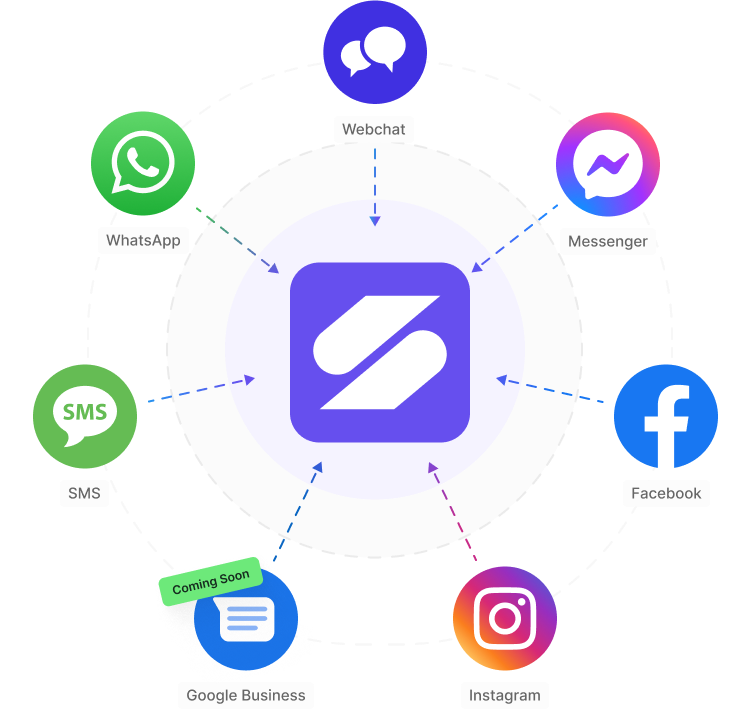
- Consolidated Contact Information
- Gather communications and create an easy-to-understand summary.
- Thorough Care Coordination
- Ensure every aspect is addressed.
- Tagging
- Organize interactions for communication and follow-ups.
- Customized Communication
- Establish categories and reminders.
- Data Presentation
- Personalized Dashboards:
- In-depth analyses to inform decisions.
- Understand Patient Engagement:
- Fine-tune strategies based on insights.
- Personalized Dashboards:
Features for Integration
- Email and Messaging Apps:
- Streamline communication across tools and platforms.
- Coordinated Messages:
- Ensure consistency across platforms.
Sanoflow provides a hands-on solution for overseeing healthcare operations by integrating components into a single tool that enhances patient support and engagement while ensuring seamless daily operations.
Steps to Implementing the Right Healthcare CRM Software
Opting for the right healthcare CRM system could greatly enhance patient happiness, streamline procedures, and guarantee adherence to regulations. When beginning the process, remember to take into account these actions:
Clarify What You Require
- Identify Obstacles and Objectives:
- Understand the main challenges your practice is facing.
- Select CRM Functions:
- Choose features that match those requirements.
Consider Choices
When selecting a Healthcare CRM Software, explore options like Sanoflow, HubSpot, or Odoo.
-
-
- Sanoflow: Specifically built for healthcare, offering easy-to-use features, seamless integrations, and full compliance with regulations.
- HubSpot: Excellent for general CRM needs but lacks healthcare-specific functionalities.
- Odoo: Highly customizable but may require additional setup for healthcare requirements.Discover how Sanoflow can simplify patient management, improve communication, and keep your practice compliant.
Book a Demo or Start Your Free Trial today!
-
Try Out the System
- Utilize Trials or Demos:
- Test how the CRM integrates with your tasks.
- Gather Team Feedback:
- Ask your team about ease of use and functionalities.
Get Your Team Ready for the Change
- Train Your Team:
- Educate them on usage and benefits.
- Offer Continuous Support:
- Ensure a seamless transition.
- Maximize Capabilities:
- Make the most out of the CRM’s features.
Monitor and Make Corrections as Needed
- Keep an Eye on Metrics:
- Monitor patient involvement and operational effectiveness.
- Adjust as Necessary:
- Check CRM usage and make adjustments.
- Stay Informed:
- Keep up with software upgrades and added functionalities.


